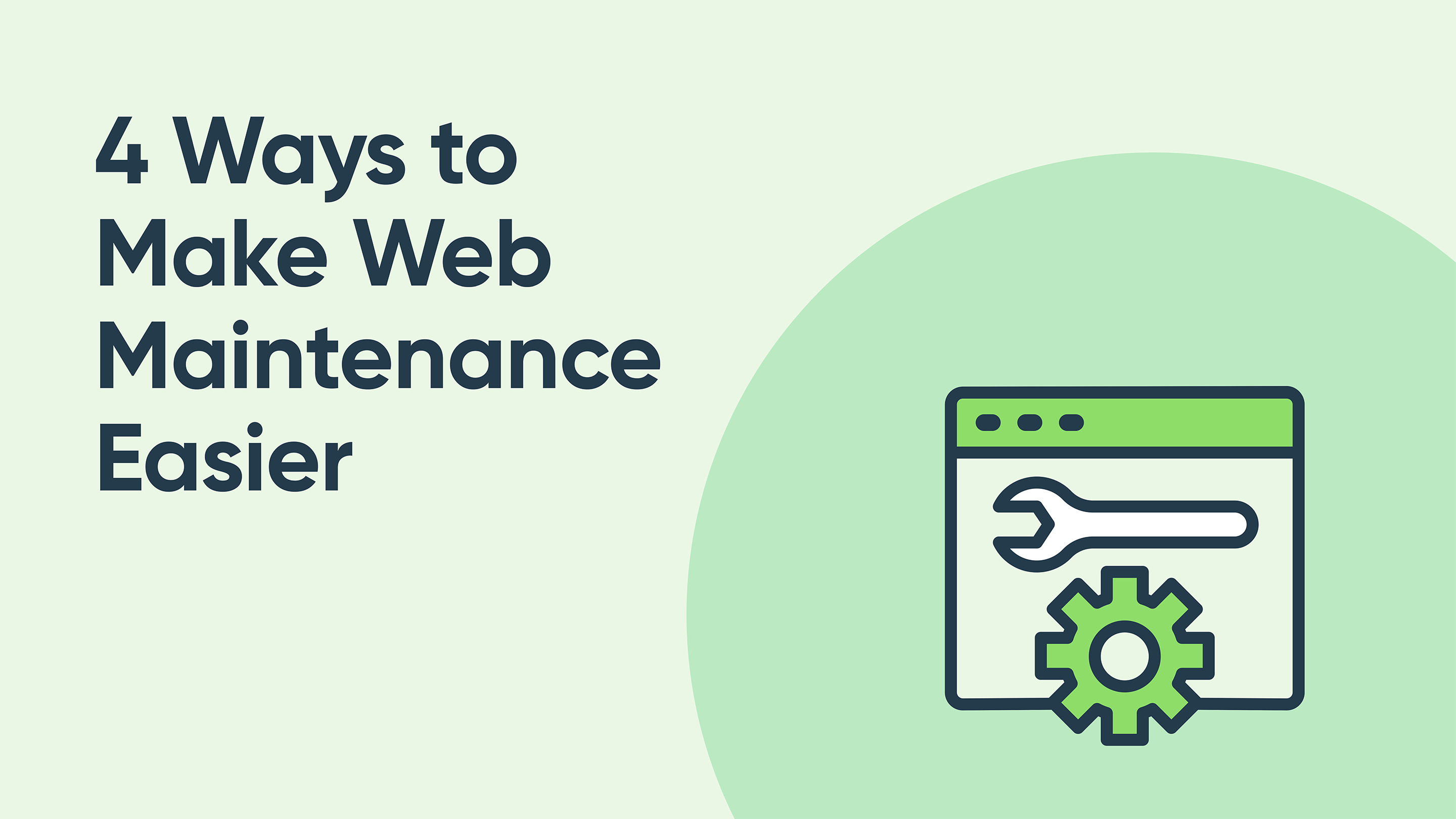
Website maintenance has a reputation for being time-consuming and frustrating for everyone involved. And for good reason. Between content updates, SEO audits, security checks, and site optimization - web maintenance can take hours to complete.
Add in emergency issues like a website going down and you can even wind up spending your “off the clock” personal time doing site maintenance work.
Luckily, it doesn’t have to be that way.
In fact, there are quite a few unbelievably simple hacks that web designers, front-end developers, and webmasters can use to make their web maintenance work easier. Let’s look at 4 of them.
Whether you design in Squarespace, Shopify, WordPress, or something else entirely - you can tap into templates to make ongoing web design and development faster. This includes projects like new product pages, landing pages, and content management systems (CMS) that your clients need urgently to run their business successfully.
At the same time, you can use pre-built plugins to make your clients’ websites more functional with minimal effort. In fact, WordPress comes with over 55,000 plugins designed to help you manage everything from spam protection and content backups to SEO. And Shopify offers their own large collection of plugins to automate everything from ad retargeting to sales tax and product returns.
In any case, using these pre-built tools enables you to quickly knock out change requests, so you can focus on full-scale web design projects that require more time and effort.
Web hosting is arguably the most stressful aspect of website maintenance because you have little control over what happens once the site goes live. If the hosting provider crashes or experiences security issues regularly, your clients’ websites will be directly impacted.
For that reason, it’s vital to help your client select the right hosting platform to support their website. Not only will it minimize the likelihood that major maintenance emergencies hurt your clients’ businesses, but it will make your life less stressful too.
There is truth to the adage: “if it ain’t broke, don’t fix it.” But there’s also wisdom in tweaking and updating working websites on a regular basis.
Not only does it whittle down the queue of necessary maintenance work that will inevitably pile up and later drain large amounts of time from your day - like SEO, link repair, and content creation - but it also ensures the site is always operating at peak performance.
Here are just a few proactive tasks that you can tackle on a regular basis to keep your workflow moving seamlessly (and keep your clients happy):
You can waste a lot of time digging around your inbox to find change requests or client conversations. And that’s time you might’ve spent working on web maintenance tasks or designing new websites, landing pages, and brand identities.
Having a helpdesk ticketing system enables you to fix that because it collects, organizes, and tracks client requests in a neat dashboard. With a helpdesk, all issues you need to tackle, questions your clients have, and nice-to-have updates designed to make the website better can be tagged by topic and sorted by webpage and client. That means everything is where you need it when you need it.
In some cases, a helpdesk can also track your clients’ retainer hours and log the time you spend on change requests – making customer relationship management nearly effortless for you. Check out our list of helpdesk ticketing systems for suggestions on the best helpdesks for web designers.
Whether you’re managing hundreds of websites or just a handful, it takes a lot of finesse to build a smooth workflow. The good news is you can start making your web maintenance work easier this week, by using themes and plugins to handle tedious tasks, choosing the right hosting provider for your clients’ sites, performing web maintenance tasks regularly, and adopting a helpdesk.